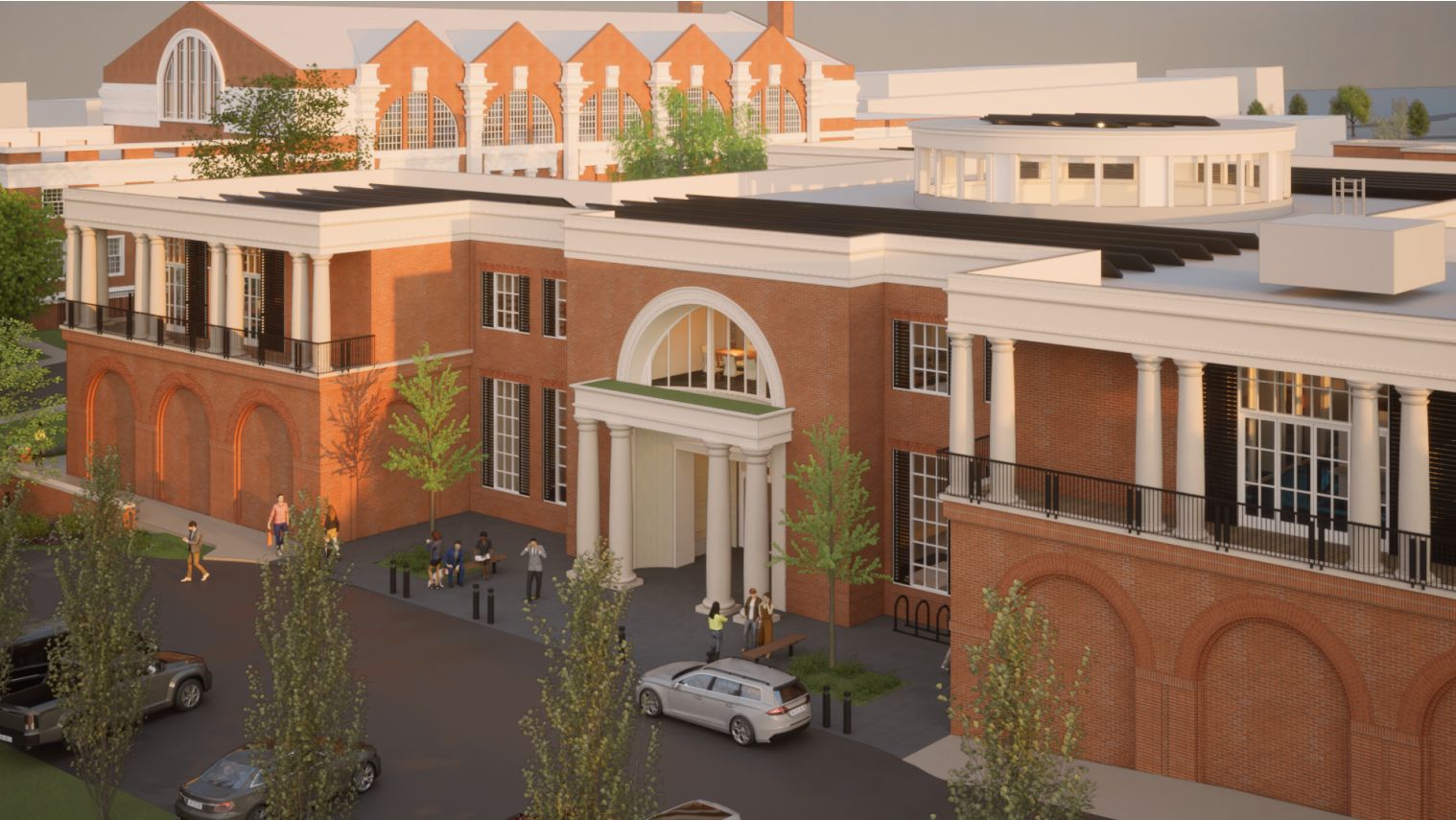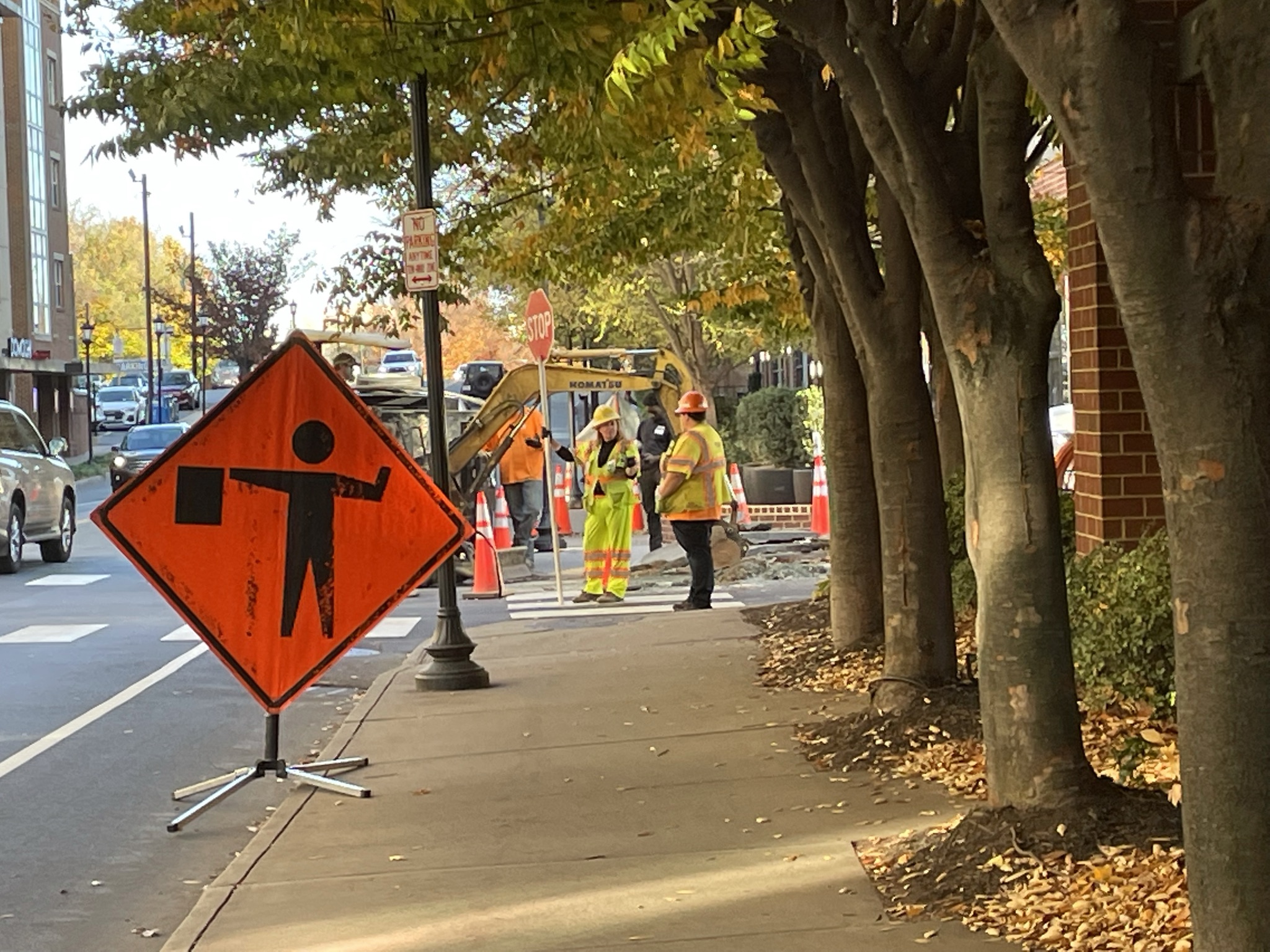The Charlottesville Planning Commission has unanimously recommended a proposal from the Charlottesville Redevelopment and Housing Authority to alter one of the conditions in a critical slopes waiver they were granted in early 2019 for the first phase of the redevelopment of South First Street. Carrie Rainey is a planner with the city of Charlottesville.
“The previously granted critical slopes waiver allows for construction and land disturbing activities within critical slopes for a development that would include 62 multifamily residential units in three buildings and a community resources center,” Rainey said.
City code defines a critical slope as one that has a grade of 25 percent or higher, and also contains either a horizontal run greater than 20 feet or is within two hundred feet of a waterway. The idea is to prevent erosion and prevent sediment from entering waterways, which kills macroinvertebrate life. The waterway Pollocks Branch is within the latter.
After construction at South First Street began, CRHA notified the city it would not be able to comply with a condition of the slopes waiver that required a phased construction so that two buildings on First Street would be built first “in order to create a better stabilized site during construction and to facilitate more effective erosion and sediment control measures.”

“The purpose of that is building three is placed on the trap that serves to treat the sediment from the areas where [buildings] two and three are being built,” said city engineer Jack Dawson.
CRHA officials maintain that because of supply issues, they need to construct all three buildings at once in order to lock in costs. On the day of the Commission’s discussion, CRHA’s engineers suggested that a combination of enhanced silt fences and placement of mulch to slow the flow of stormwater runoff that would go to Pollocks Branch, which flows into Moores Creek, which flows into the Rivanna River.
“That’s mostly not acceptable for this type of application and there are sort of some further concerns I have with that as well,” Dawson said.
After spending a few minutes detailing what he felt was problematic about the plan, Dawson reached a conclusion, though he said he understood the importance of this project.
“It’s going to be difficult to ensure that what’s done here is actually enforceable and carried out,” Dawson said. “There’s been significant problems on the site so far with conforming with the erosion and sediment control scheme.”
City Attorney Lisa Robertson said the critical slopes waiver process happens at the legislative level, sometimes long before a site plan will be submitted.
“So the situation you wind up with is that you vote on these things and you adopt conditions such as let’s sequence the buildings to make sure we provide extra protections for the critical slopes areas and minimize disturbance and then you find out when you get closer to construction through the process of doing the erosion and sediment control plan that certain things can or can’t be done with that,” Robertson said.
Robertson said if the Commission granted the waiver, CRHA and city staff would still have to work to ensure the plan complies with Virginia’s erosion and sediment control regulations.
“What you really need to decide tonight is whether or not you’re going to get rid of the construction sequencing condition and whether or not you need to get rid of any other conditions,” Robertson said.
Robertson suggested this is one area to review as the zoning code is updated.
Ashley Davies of Riverbend Development led the CRHA’s presentation. The request is centered on a need to build all three buildings are materials are found due to supply chain issues related to the availability of lumber during the pandemic.
“We certainly don’t have any ill intent and we are just as committed to protecting Pollocks Branch as anyone else,” Davies said.
Davies said the disturbance of slopes has all occurred and stabilization methods are in place, but the condition on phasing does not work in order to meet the project schedule.
“We’ve also think I spent a lot of time working with staff to try and make adaptations on site as we’ve discovered issues but basically what we found is that staff is like, ‘well, we can’t make any of these recent adaptations because this was a Planning Commission and City Council condition’ so it doesn’t really allow the [erosion and sediment process] to adapt or be amended with staff,” Davies said.
Davies said she did not feel Pollocks Branch would be in any danger of environmental harm. Scott Collins, a civil engineer working on the project, said the sediment trap would still be in place during construction.
“We are still achieving 100 percent stabilization on the site from the parking lot up,” Collins said. “For everything that would go to that sediment trap, before we remove that sediment trap we are stabilizing that per Virginia stormwater and erosion and sediment control standards.”
Dawson said in a recent site visit, he saw sediment being discharged into Pollocks Branch and that construction was outside of the limits of disturbance outlined in the plan. Dawson also said he chose not to take immediate action.
“We certainly could have issued a stop work order immediately,” Dawson said. “That’s not what we did.
The Commission voted unanimously to recommend dropping the waiver. It will next move on to City Council.
(This article originally appeared in the July 22, 2021 edition of Charlottesville Community Engagement)












